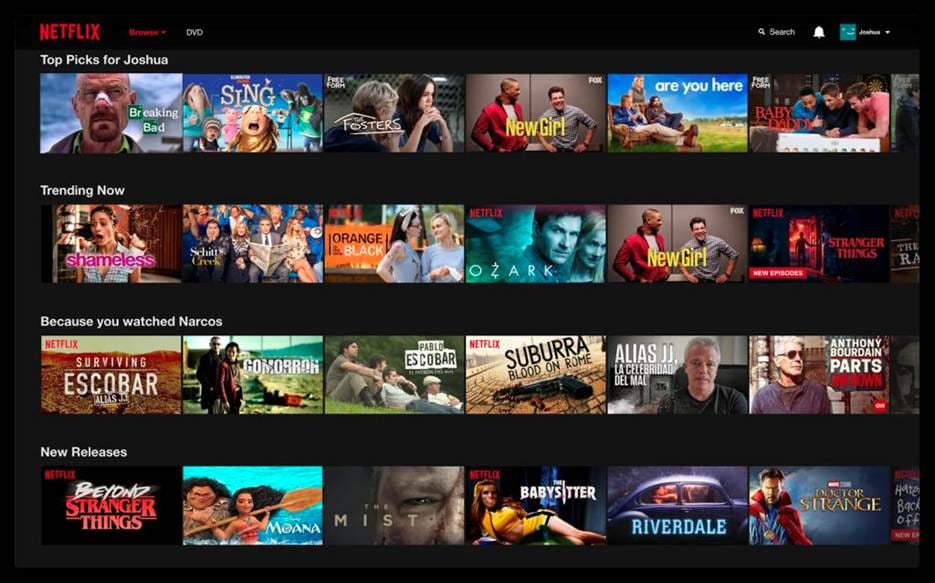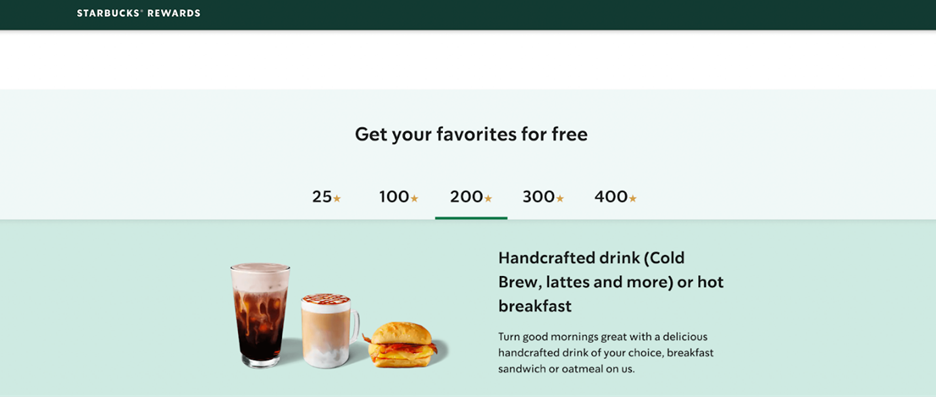Steigerung der Umfragebeantwortungsrate durch Belohnungen
Erfahren Sie, was die Ursachen für eine niedrige Beantwortungsquote von Umfragen sind und wie man sie beseitigen kann. In diesem Blog werden die wichtigsten Herausforderungen, praktische Lösungen und Best Practices für Umfragen vorgestellt, die die Beantwortungsquote verbessern und Ihnen helfen, genauere und umsetzbare Erkenntnisse zu gewinnen.
Auf dieser Seite
- Was ist eine Umfragebeantwortungsrate?
- Wie wird die Beantwortungsquote einer Umfrage berechnet?
- Hauptgründe, warum Befragte Umfragen ignorieren
- 16 Bewährte Verfahren für die Durchführung von Umfragen
- 13 Tipps zur Steigerung der Beantwortungsquote von Umfragen
- Wie Belohnungen und Anreize die Umfragemüdigkeit überwinden und die Beantwortungsquote erhöhen können
- Die Wahl der richtigen Belohnungen zur Steigerung der Beantwortungsquote bei Umfragen
- Erarbeitung einer erfolgreichen Prämienstrategie. Hier ist ein Fahrplan
- Kantar automatisiert die Verteilung von Prämien mit Plum
Haben Sie schon einmal Ihr Bestes gegeben, um eine Umfrage zu erstellen, und sind dann nur auf Schweigen gestoßen? Das ist nicht nur frustrierend, sondern ein Zeichen für ein größeres Problem: Umfragemüdigkeit. In der heutigen Welt werden die Menschen mit Anfragen nach Feedback überschwemmt, was zu Desinteresse und Apathie führt. Die Folgen? Unvollständige Daten, ungenaue Erkenntnisse und schlechte Entscheidungen, die auf nicht repräsentativem Feedback beruhen.
Stellen Sie sich vor, Sie bringen ein Produkt auf der Grundlage von verzerrten Antworten auf den Markt, übersehen wichtige Schmerzpunkte oder interpretieren die öffentliche Meinung falsch. Die Kosten, die durch das Ignorieren von Umfragen entstehen, können erheblich sein - sie schaden Ihren Geschäftsentscheidungen, Kundenbeziehungen und Ihrer Glaubwürdigkeit.
In diesem Blog gehen wir auf acht Hauptgründe für eine geringe Beteiligung an Umfragen ein und stellen Lösungen vor, mit denen sich die Abschlussraten und die Qualität der Antworten steigern lassen.
Warum sind Umfragen wichtig? Weil sie einen direkten Zugang zu den Köpfen und Motivationen Ihrer Zielgruppe bieten. Egal, ob Sie im Marketing, in der Personalabteilung oder in der öffentlichen Verwaltung tätig sind - Umfragen helfen Ihnen, bessere Entscheidungen zu treffen, Produkte zu entwickeln, das Engagement Ihrer Mitarbeiter zu verbessern und Ihre Strategien an den tatsächlichen Bedürfnissen auszurichten.
Was ist eine Umfragebeantwortungsrate?
Eine Umfrage ist umso erfolgreicher, je höher die Rücklaufquote ist. Die Beantwortungsquote ist der Prozentsatz der Personen, die an der Umfrage teilgenommen haben, im Vergleich zum Prozentsatz der Personen, die die Umfrage angesehen haben. Nicht jeder, der eine Umfrage ansieht oder startet, schließt sie auch ab. Dies kann verschiedene Gründe haben, die mit wirksamen Strategien korrigiert werden sollten, um eine gute Beantwortungsquote zu erreichen.
Wie wird die Beantwortungsquote einer Umfrage berechnet?
Die Beantwortungsquote wird berechnet, indem die Anzahl der Personen, die die Umfrage ausgefüllt haben, durch die Anzahl der Personen geteilt wird, die zur Teilnahme an der Umfrage eingeladen oder angesprochen wurden. Dieses Ergebnis wird dann mit 100 multipliziert, um den Wert in Prozent auszudrücken.
Anzahl der eingegangenen Antworten
__________________________________ X 100
Gesamtzahl der Personen, an die die Umfrage geschickt wurde
Wenn Sie zum Beispiel die Umfrage an 400 Personen geschickt haben und 120 Antworten erhalten haben, dann wäre die Beantwortungsquote (120/400) X 100 = 30%.
Eine gute Rücklaufquote für Umfragen liegt bei 40 bis 50 Prozent. Die Unternehmen sollten die Umfrage so planen, dass eine gute Quote erreicht wird. Andernfalls wird der Zweck der Umfrage nicht erfüllt.
Eine gute Quote wird nicht immer erreicht, weil die Unternehmen bestimmte wirksame Strategien nicht befolgen.
Hauptgründe, warum Befragte Umfragen ignorieren
Seien wir ehrlich, es kann schwierig sein, die Abschlussquoten von Umfragen zu erreichen. Zu verstehen, warum die Befragten sie ignorieren, ist entscheidend für die Maximierung Ihrer Chancen auf eine Beteiligung.
Hier sind einige Gründe, warum die Befragten auf die Schaltfläche "Löschen" drücken:
1. Zeit
In unserer schnelllebigen Welt zählt jede Minute. Wenn Ihre Umfrage als zu lang oder zeitaufwändig empfunden wird, werden die Befragten wahrscheinlich anderen Aufgaben den Vorrang geben. Fassen Sie sich kurz und geben Sie die voraussichtliche Bearbeitungszeit an. Eine Studie von SurveyMonkey ergab, dass bei Umfragen, die länger als 7-8 Minuten dauern, die Ausfüllraten um 5 % bis 20 % sinken.
2. Anstrengung
Sind Ihre Fragen verwirrend, wiederholen sie sich oder erfordern übermäßiges Tippen? Jede Hürde erhöht den erforderlichen Aufwand, schafft Reibungsverluste und schreckt vom Ausfüllen der Umfrage ab. Entscheiden Sie sich für klare, prägnante Fragen mit Antwortoptionen, die auf Ihre Zielgruppe abgestimmt sind. Benutzerunfreundliche" Umfragen mit schlechter UX, die das Navigieren durch die Schritte zu einer "Qual" machen, fallen ebenfalls in diese Kategorie.
3. Relevanz
Wenn die Befragten keine Verbindung zwischen dem Thema der Umfrage und ihren Interessen oder Erfahrungen sehen, werden sie sich gleichgültig fühlen. Selbst wenn Ihr Thema mit ihrem Lebensstil übereinstimmt, müssen Sie sich besonders anstrengen, um sicherzustellen, dass Ihre Fragen intelligent und nicht anstößig sind und nicht gegen Protokolle, Ursachen und Vorschriften verstoßen. Passen Sie Ihre Umfrage auf bestimmte demografische Merkmale oder Verhaltensweisen an, um Relevanz zu gewährleisten und echtes Feedback zu erhalten.
4. Umfrage Müdigkeit
Stellen Sie sich vor, Sie gehen eine Straße entlang und werden von Verkäufern bombardiert, die verschiedene Umfragen anpreisen. So geht es vielen Befragten heute. Wir werden online und offline mit Umfragen bombardiert. Die ständige Teilnahme führt zu Ermüdung und Abstumpfung. Begrenzen Sie die Häufigkeit, variieren Sie Ihre Vorgehensweise und bieten Sie überzeugende Anreize, um der Ermüdung entgegenzuwirken und die Beantwortungsquote zu erhöhen.
5. Transparenz
Undurchsichtige Umfragen wecken rote Fahnen. Machen Sie transparent, was der Zweck der Umfrage ist, wer sie durchführt und wie die Daten verwendet werden. Das schafft Vertrauen und ermutigt zur Teilnahme.
6. Zinsen
Sind Ihre Fragen trocken und vorhersehbar? Bringen Sie Kreativität und Faszination ein, um die Neugier zu wecken und die Befragten zum Mitmachen zu motivieren. Ziehen Sie visuelle Elemente, interaktive Formate oder personalisierte Fragen in Betracht.
7. Zeitmessung
Das Versenden von Umfragen zu ungünstigen Zeiten ist ein Rezept für Desinteresse. Berücksichtigen Sie Zeitzonen, kulturelle Normen und demografische Merkmale der Empfänger, um den Versandzeitpunkt zu optimieren und die Sichtbarkeit zu maximieren. Nutzen Sie Analysen, um das Online-Verhalten, kulturelle Merkmale und Arbeits- und Lebensmuster zu ermitteln und Ihre Zeitstrategie zu optimieren. Eine Studie zeigt, dass die höchste Ausfüllrate für kürzere Umfragen am Montag zu beobachten ist (18 %).
8. Motivation
Warum sollten die Befragten ihre Zeit investieren? Vermitteln Sie klar den Wert ihrer Teilnahme und heben Sie die positiven Auswirkungen hervor, die ihr Feedback haben kann. Überlegen Sie, ob Sie Anreize bieten oder das Erlebnis spielerisch gestalten können, um das Engagement weiter zu motivieren. Von allen Befragten geben ⅓ an, dass Belohnungen oder Preise ihre Hauptmotivation sind.
16 Bewährte Verfahren für die Durchführung von Umfragen
Hier sind 16 bewährte Verfahren für die Durchführung von Umfragen, die Sie kennen müssen, um eine erfolgreiche Umfrage durchzuführen.
1. Sie sollen sich besonders fühlen
Beginnen Sie damit, den Befragten zu sagen, dass Sie es wirklich zu schätzen wissen, dass sie sich die Zeit nehmen und sich bemühen, an Ihrer Umfrage teilzunehmen. Ergänzen Sie diesen Gedanken, indem Sie hinzufügen, wie wertvoll ihre Ansichten für den Erfolg Ihres Projekts sind.
Wenn Sie sie nach sorgfältiger Auswahl und Überlegung ausgewählt haben, betonen Sie, dass sie zu einer exklusiven und handverlesenen Gruppe gehören, an die diese Umfrage geht.
Und drücken Sie Ihre Dankbarkeit aus - eine kurze Nachricht nach jeweils drei Fragen kann sehr effektiv sein, gefolgt von einer ausführlicheren Nachricht am Ende der Umfrage.
2. Grenzen Sie Ihre Ziele ein
Konzentrieren Sie sich auf das/die genaue/n Ziel/e, das/die Sie erreichen wollen. Beschränken Sie die kritischen Ziele auf so wenige wie möglich.
Auf diese Weise können Sie nicht nur tiefer in jeden Bereich eindringen (und weniger Zeit der Befragten in Anspruch nehmen), sondern Sie erhalten auch mehr "aussagekräftige Daten", die leichter zu verwalten sind.
Das "Syndrom des quietschenden Rades" bedeutet, dass Fragen, die im Vordergrund stehen, mehr Bedeutung beigemessen wird.
Dies kann jedoch dazu führen, dass Ihre Umfrage einseitig oder verzerrt wird. Achten Sie auf eine ausgewogene Verteilung der Fragen, die alle relevanten Blickwinkel und Perspektiven abdecken, damit die Ergebnisse unvoreingenommen und wertvoll sind.
3. Achten Sie auf Stichprobenfehler
Stellen Sie sicher, dass die Auswahl Ihrer "Fokusgruppe" korrekt und unvoreingenommen ist. Wenn Sie eine Umfrage über die Essgewohnheiten von Kindern durchführen wollen, sollten Sie Ihre Post nicht an Singles verschicken. Wenn Sie ein Feedback zu Ihrem neuen Fleischgrill wollen, sollten Sie die Umfrage nicht an Veganer schicken. Sie verstehen schon.
Untergruppen innerhalb der Bevölkerung können beispielsweise die Ergebnisse "verfälschen" und das Ergebnis "unverallgemeinerbar" machen, da es auch die Meinung von Personen enthält, die nicht zu Ihrer "Fokusgruppe" gehören.
Um sicherzustellen, dass Ihr Fragebogen die für Ihre Studie geeigneten und relevanten Personen erreicht, senden Sie ihn an kleinere Gruppen in verschiedenen Regionen.
Die andere "Lösung" ist eine Überstichprobe, um möglichst viele der richtigen Bevölkerungsgruppen zu erfassen. Stichprobenfehler sind jedoch ein hartnäckiges Problem im "Umfrageland", das man zwar minimieren, aber möglicherweise nicht ausschalten kann.
4. Bleiben Sie im Gleichgewicht und vermeiden Sie das Syndrom des quietschenden Rads
Das "Syndrom des quietschenden Rades" bezieht sich auf die Praxis, Fragen, die im Vordergrund stehen, mehr Bedeutung beizumessen.
Dies kann jedoch dazu führen, dass Ihre Umfrage einseitig oder verzerrt wird. Achten Sie auf eine ausgewogene Verteilung der Fragen, die alle relevanten Blickwinkel und Perspektiven abdecken, damit die Ergebnisse unvoreingenommen und wertvoll sind.
5. Werden Sie nicht zu persönlich
Werden Sie bei Ihren Fragen nicht zu persönlich. Demografische Angaben wie Alter, Geschlecht, Wohnort und andere sind bereits bei Ihnen vorhanden, so dass Fragen dazu Ihre Umfrage nur unprofessionell wirken lassen.
Wenn Sie persönliche und berufliche Details erforschen, wird Ihre Datenbank zwar detaillierter, aber der Nutzer ist möglicherweise verärgert. Am besten ist es, einen Mittelweg zu finden und nur so viele Informationen zu verwenden, wie Sie benötigen.
6. Halten Sie es einfach und logisch.
Gestalten Sie Ihre Fragen so, dass der Befragte:
- Sie können die Fragen in beliebiger Reihenfolge oder Weise beantworten - es sei denn, es gibt einen guten Grund für die von Ihnen festgelegte Reihenfolge.
- Er hat es nicht eilig, den Fragebogen innerhalb einer bestimmten Zeitspanne auszufüllen (oder, noch schlimmer, einer tickenden Uhr).
- Ist nicht gezwungen, für jedes 6. Wort ein Wörterbuch aufzuschlagen: Stellen Sie sicher, dass die Umfrage nicht mit ausgefallenen Wörtern, komplizierten Begriffen oder Industrie-/Berufsjargon vollgestopft ist.
- Hat die Möglichkeit, eine Frage zu überspringen und mit der nächsten fortzufahren.
- Es muss nicht heißen: "Finde die versteckte Frage im Bild", denn es handelt sich nicht um ein Spiel für Kinder.
- Stellen Sie keine zusammengesetzten oder mehrschichtigen Fragen (mit Auslösern wie "und", "oder", "nicht", "trotzdem", "aber", "dann" usw., die zwei oder drei Fragen in einer einzigen zusammenfassen). Achten Sie auf einen klaren, nicht beleidigenden und überzeugenden Ton.
7. Kurz und bündig halten
Die besten Umfragen regen zum Nachdenken an und sind nicht zeitraubend. Sie respektieren auch die Zeit der Befragten. Beschränken Sie die visuellen Elemente auf ein Minimum, um Unübersichtlichkeit zu vermeiden, sprechen Sie sie mit einer warmen und freundlichen Stimme an und widerstehen Sie der Versuchung, alles zu überfrachten.
Versuchen Sie, die Fragen auf strategischer / langfristiger Ebene zu reduzieren (heben Sie sie für eine andere Umfrage auf) und stattdessen taktische Fragen zu stellen, die in den nächsten sechs Monaten zu beantworten sind.
8. Vertrautheit mit dem Thema anzunehmen ist eine schlechte Idee
Gehen Sie nicht davon aus, dass Ihr Befragter über fortgeschrittene Kenntnisse oder Expertenwissen zu dem Thema verfügt. Wenn Sie Fachleute befragen, müssen Sie immer noch ein angemessenes Maß an Vertrautheit einkalkulieren (denken Sie daran, dass es Ihr Verlust ist, wenn sie die Frage auslassen).
Bieten Sie ihnen eine einfache Möglichkeit, auf Informationen zuzugreifen, wenn sie mehr Klarheit über eine Frage benötigen. (Sie können Seitenhinweise, Fußnoten oder Google-Links bereitstellen)
9. Auffordernde Fragen
"Wir haben vor kurzem ein erstklassiges Produkt auf den Markt gebracht, das die Produktivität steigert, Zeit und Kosten spart und auf Amazon eine Bewertung von 95 % erhalten hat - wenn Sie es benutzt haben, würden wir gerne wissen, was Sie davon halten", lautet eine Leitfrage.
Eine Suggestivfrage enthält eine eingebaute Information, die - ohne es zu beabsichtigen - die Antwort verzerrt. Wenn man die Objektivität aus der Gleichung herausnimmt, wird man dessen beraubt, was ein echter Einblick hätte sein können.
10. Begrenzen Sie die Anzahl der "offenen" Fragen
Offene Fragen konzentrieren sich darauf, qualitatives Feedback zu sammeln, im Gegensatz zu Ja- oder Nein-Fragen, die quantifizierbar sind. . Sie verlangen eine beschreibende Antwort, die den Befragten zum Nachdenken anregt und ihn dazu bringt, seine Gefühle und Meinungen mitzuteilen. Offene Fragen sind für die qualitative Marktforschung unverzichtbar, weil sie einzigartige Einblicke und Werte liefern, die Sie mit einem Ja-Nein-Format wahrscheinlich nicht hätten erreichen können.
Zu viele offene Fragen können jedoch dazu führen, dass am Ende Unmengen von Text zu entziffern sind (vor allem, wenn es sich um eine umfangreiche Umfrage handelt). Beschränken Sie sich daher auf 2 oder 3 Fragen und planen Sie deren Thema und Formulierung sorgfältig, um alle erforderlichen Aspekte abzudecken.
11. Fragen zum Benutzerintervall
Die meisten von uns hassen es, sich auf eine Verpflichtung festzulegen. Das liegt daran, dass die Wahrheit meist irgendwo in der Grauzone zwischen Schwarz und Weiß liegt.
Ein einfaches Ja-Nein oder Zustimmen-Nicht-Zustimmen wird in solchen Fällen keinen genauen Einblick gewähren. Geben Sie den Befragten einen breiten Spielraum, z. B. Ehrfurcht einflößend > gut > ok > schlecht > schrecklich oder eine einfache Bewertung von 1 bis 5.
12. Beibehaltung eines objektiven (und durchgängig kohärenten) Ratingrahmens
Bewertungen sind aus zwei Gründen potenzielle Fallstricke. Sie können den "Buchstaben" anzeigen, aber den "Geist" (die Absicht) der Antwort verbergen. Zum Beispiel kann eine Bewertung von 7 eine Verbesserung gegenüber 6 oder eine Verschlechterung gegenüber 8 bedeuten, aber es gibt keine Möglichkeit zu sagen, welche.
Das ist nicht immer einfach, da spezifische Themen, die subjektiv sind, von Natur aus nicht zu einer klinisch "gleichmäßigen" Standardisierung führen. Versuchen Sie, Grauzonen zu beseitigen und die Frage so "einfach" wie möglich zu gestalten.
13. Achten Sie auf doppelte Ergebnisse
Wenn Sie einen Anreiz oder eine Belohnung anbieten, können die Teilnehmer versuchen, dieselbe Umfrage mit mehreren Items auszufüllen, um ihre Gewinnchancen zu erhöhen (z. B. bei einer Verlosung).
Um diesem häufigen Syndrom entgegenzuwirken, sollten Sie ein Protokoll einfügen, das jeder Person die mehrfache Teilnahme verbietet.
14. Technologie einbeziehen
SaaS-Unternehmen wie Plum beispielsweise helfen Ihnen, den gesamten Prozess zu automatisieren - von konfigurierbaren und selbst zu erstellenden Tools über die hierarchieübergreifende Zugangskontrolle bis hin zur Omnichannel-Präsenz (z. B. können die Teilnehmer die Befragung ganz einfach per Mobiltelefon durchführen, wann und wo sie wollen) und zu digitalen Berichten und umsetzbaren Analysen.
15. Nutzen Sie die "Folgefrage".
Ihre Umfrage muss nicht mit Ihrer Umfrage enden. Wenn Sie Folgefragen stellen, können Sie besser verstehen, warum ein Teilnehmer eine Umfrage auf eine bestimmte Weise beantwortet hat, und wertvolle Erkenntnisse gewinnen, die Ihnen beim ersten Mal vielleicht entgangen sind.
Dies ist Ihre Gelegenheit, wichtige Gesichtspunkte und Aspekte zu vertiefen, unklare oder widersprüchliche Antworten zu klären (entweder durch Details oder durch den Kontext) und mehr Informationen über Gesichtspunkte zu erhalten, die Sie interessant fanden (und die Sie für wert halten, weiter verfolgt zu werden).
Allgemeine, offene Fragen zu Ihrem Produkt, zu Verbesserungsmöglichkeiten, zur Person des Empfängers (Emotionen, Ereignisse und Visionen, die ihn beeinflussen) und schließlich zur Umfrage selbst: Wie gut oder schlecht sie sie organisiert fanden.
16. In Kontakt bleiben
Betrachten Sie Ihre Umfrage nicht als einmalige Begegnung, sondern als Ausgangspunkt für eine dauerhafte Beziehung. Halten Sie zum Beispiel Ihr Wort, wenn Sie ihnen ein Update oder einen Gefallen versprochen haben.
Wenn Sie ihnen gesagt haben, dass Ihnen ihr Feedback viel bedeutet, beweisen Sie es, indem Sie Einzelheiten über die Auswirkungen auf Ihr Projekt oder Ihr Unternehmen mitteilen.
Halten Sie sie auf dem Laufenden, indem Sie ihnen von Zeit zu Zeit spannende Informationen über Ihre Reise geben (und sie daran erinnern, dass ihre Umfrage dazu beigetragen hat) - so bleiben Ihre Marke und Ihr Produkt im Gedächtnis und es entstehen Brücken für die nächste Umfrage.
13 Tipps zur Steigerung der Beantwortungsquote von Umfragen
Hier finden Sie 13 wirksame Tipps zur Steigerung der Beantwortungsquote von Umfragen mit Beispielen bekannter Marken:
1. Personalisierung und Targeting
Die Personalisierung kann die Beantwortungsrate von Umfragen erheblich steigern. Beginnen Sie mit der Anpassung Ihrer Umfrageeinladungen, um sie ansprechender und relevanter zu gestalten. Sprechen Sie die Empfänger mit ihrem Namen an und erwähnen Sie frühere Interaktionen oder Käufe, die sie mit Ihrer Marke getätigt haben.
Ziehen Sie in Erwägung, Ihre Zielgruppe auf der Grundlage von demografischen Daten, Verhalten oder anderen relevanten Faktoren zu segmentieren. Indem Sie den Inhalt Ihrer Umfrage auf die spezifischen Interessen oder Bedürfnisse der einzelnen Gruppen zuschneiden, geben Sie den Befragten das Gefühl, dass ihr Beitrag wertvoll ist, und erhöhen so die Wahrscheinlichkeit der Teilnahme.
Zum Beispiel: Die personalisierten Empfehlungen von Netflix
Netflix ist ein Paradebeispiel dafür, wie die Personalisierung das Engagement der Nutzer und die Beantwortungsraten von Umfragen steigern kann. Netflix verwendet hochentwickelte Algorithmen, um die Sehgewohnheiten und Vorlieben der Nutzer zu analysieren. Auf der Grundlage dieser Daten werden jedem Nutzer personalisierte Inhaltsempfehlungen gegeben. Wenn Netflix Feedback von den Nutzern einholen möchte, verschickt das Unternehmen Umfragen, die auf die Sehgewohnheiten und Vorlieben der einzelnen Nutzer zugeschnitten sind.

Wenn ein Nutzer beispielsweise viele Dokumentarfilme anschaut, kann sich die Umfrage auf seine Meinung zum Dokumentarfilmangebot von Netflix konzentrieren. Dieser personalisierte Ansatz erhöht die Wahrscheinlichkeit, dass die Nutzer an der Umfrage teilnehmen, da sie direkt auf ihre Interessen zugeschnitten ist.
2. Anreize und Belohnungen
Das Anbieten von Anreizen und Belohnungen kann ein starker Motivator für die Teilnahme an einer Umfrage sein. Greifbare Belohnungen wie Rabatte, Geschenkgutscheine oder kostenlose Produkte/Dienstleistungen im Austausch für die Teilnahme an einer Umfrage können besonders effektiv sein.
Alternativ können Sie für Spannung sorgen, indem Sie den Teilnehmern die Chance geben, bei einer Verlosung wertvolle Preise zu gewinnen. Nicht-monetäre Belohnungen wie exklusive Inhalte, frühzeitiger Zugang oder Anerkennung können ebenfalls verschiedene Motivationen ansprechen und höhere Antwortquoten fördern.
Zum Beispiel: Starbucks' Belohnungsprogramm
Starbucks hat ein sehr erfolgreiches Kundenbelohnungsprogramm. Das Unternehmen verschickt gelegentlich Umfragen an die Mitglieder seines Treueprogramms und bietet ihnen die Möglichkeit, für das Ausfüllen der Umfrage Bonussterne zu verdienen (die gegen kostenlose Getränke und Lebensmittel eingelöst werden können). Dieser Anreiz ermutigt die Kunden, sich die Zeit zu nehmen, ein Feedback zu geben, und erhöht die Rücklaufquote.

3. Mobile Optimierung und Komfort
In der heutigen mobilitätsorientierten Welt ist es entscheidend, Ihre Umfragen für mobile Geräte zu optimieren. Stellen Sie sicher, dass Ihr Umfragedesign reaktionsfähig und auf verschiedenen Bildschirmgrößen benutzerfreundlich ist. Viele Menschen greifen über Smartphones und Tablets auf Umfragen zu, daher ist eine für Mobilgeräte optimierte Erfahrung unerlässlich.
Halten Sie die Umfragen kurz und übersichtlich, so dass sie im Idealfall nicht länger als 5-10 Minuten dauern. Implementieren Sie Funktionen wie Fortschrittsbalken, um den Befragten zu zeigen, wie weit sie in der Umfrage sind und wie viel Zeit noch verbleibt, um den Gesamtkomfort und die Benutzererfahrung zu verbessern.
4. Sozialer Beweis und Vertrauensbildung
Der Aufbau von Vertrauen bei den Umfrageteilnehmern ist von größter Bedeutung. Binden Sie Elemente des sozialen Nachweises ein, indem Sie Zeugnisse oder Bewertungen von früheren Befragten teilen, die einen Nutzen aus der Teilnahme gezogen haben.
Dies demonstriert die Legitimität und Glaubwürdigkeit Ihrer Umfragen. Machen Sie außerdem deutlich, dass Sie sich dem Datenschutz und der Anonymität verpflichtet fühlen. Versichern Sie den Teilnehmern, dass ihre Angaben vertraulich behandelt und ausschließlich zu Forschungszwecken verwendet werden. Entwerfen Sie Ihre Umfragen mit einem sauberen und professionellen Erscheinungsbild, um das Vertrauen der Befragten zu stärken.
Yelp, eine beliebte Bewertungsplattform, nutzt Social Proof effektiv, um nutzergenerierte Inhalte zu fördern. Sie zeigt die Anzahl der Bewertungen, Fotos und Check-ins für jedes Unternehmen an. Außerdem gibt es ein"Yelp Elite Squad"-Programm, das aktive und vertrauenswürdige Rezensenten anerkennt und belohnt. Dieser Ansatz fördert ein Gefühl der Gemeinschaft und des Vertrauens und veranlasst mehr Nutzer zur Teilnahme, indem sie Bewertungen abgeben und Umfragen ausfüllen.
5. Engagement über mehrere Kanäle
Diversifizieren Sie Ihren Ansatz, um ein breiteres Publikum anzusprechen. Bewerben Sie Ihre Umfragen über verschiedene Kanäle, z. B. per E-Mail, über soziale Medien, über Website-Banner und ggf. sogar mit Flyern oder Schildern in Geschäften.
Auch das Timing ist entscheidend: Experimentieren Sie mit verschiedenen Uhrzeiten und Tagen, um Einladungen zu Umfragen zu versenden, um die Reichweite und die Beteiligung zu maximieren. Zögern Sie nicht, denjenigen, die noch nicht geantwortet haben, sanfte Erinnerungen zu schicken, aber gehen Sie dabei taktvoll vor, um nicht als spammig wahrgenommen zu werden.
Durch den Einsatz mehrerer Kontaktpunkte und Kontaktstrategien können Sie die Sichtbarkeit Ihrer Umfrage erhöhen und die Beantwortungsraten verbessern
Im Jahr 2024 versuchte das Marktforschungsunternehmen TrendPulse, die Einkaufsgewohnheiten der Generation Z zu verstehen. Um dies zu erreichen, wurde eine Strategie für mobile Umfragen eingeführt, bei der Umfragen über SMS, Werbung in sozialen Medien und In-App-Benachrichtigungen verteilt wurden. Als Anreiz wurde den Teilnehmern die Chance geboten, Konzertkarten zu gewinnen. Dieser Ansatz führte zu einer Antwortquote, die fast doppelt so hoch war wie bei den vorherigen Umfragen, die nur per E-Mail durchgeführt wurden, und lieferte vielfältigere und repräsentativere Einblicke in die Vorlieben der Generation Z.
6. Transparenz und Kommunikation
Transparenz während des gesamten Umfrageprozesses ist von entscheidender Bedeutung. Kommunizieren Sie klar und deutlich den Zweck Ihrer Umfrage, die Verwendung der Daten und den erwarteten Nutzen für die Teilnehmer. Sprechen Sie Bedenken bezüglich des Datenschutzes und der Anonymität von vornherein an. Schaffen Sie Vertrauen, indem Sie offen und ehrlich sind, was mehr Menschen zur Teilnahme ermutigen kann.
Ein bemerkenswertes Beispiel für ein Unternehmen, das sich für Transparenz beim Kundenfeedback einsetzt , ist Stripe. Im Jahr 2025 führte der CEO von Stripe, Patrick Collison, einen einzigartigen Ansatz ein, indem er Kunden einlud, direkt an den zweiwöchentlichen Führungstreffen des Unternehmens teilzunehmen. Während der ersten 30 Minuten dieser Sitzungen gibt ein Kunde ein offenes Feedback über seine Erfahrungen mit den Dienstleistungen von Stripe und liefert so den rund 40 Top-Managern Echtzeit-Einblicke.
Diese Praxis zeigt beispielhaft, wie ein transparenter und direkter Umgang mit Kunden zu wertvollen Erkenntnissen führen und die Beziehung zwischen einem Unternehmen und seinen Kunden stärken kann.
7. Gamification und interaktive Umfragen
Wenn Sie Gamification-Elemente in Ihre Umfragen einbauen, können Sie diese ansprechender gestalten. Erstellen Sie interaktive Umfrageerlebnisse mit Elementen wie Quiz, Umfragen oder Herausforderungen. Bieten Sie Belohnungen oder Anerkennung für das Erreichen bestimmter Meilensteine innerhalb der Umfrage an.
Gamifizierte Umfragen fesseln nicht nur die Aufmerksamkeit der Befragten, sondern machen den Prozess auch angenehmer, was zu höheren Antwortquoten führt.
McDonald's führt eine beliebte Monopoly-Aktion durch, bei der die Kunden Spielfiguren mit ihren Einkäufen erhalten. Diese Teile enthalten oft Umfragecodes, die die Kunden online eingeben können, um Preise zu gewinnen. Durch die Integration von Umfragen in ein spielerisches Erlebnis ermutigt McDonald's seine Kunden, an Umfragen teilzunehmen, und erhöht so die Antwortquote.
Ein weiteres erstaunliches Beispiel ist: Microsoft Rewards
Microsoft Rewards ist ein Programm, das Benutzer dazu anregt, sich mit Microsoft-Produkten und -Diensten zu beschäftigen. Die Benutzer können für die Erledigung von Aufgaben, einschließlich der Teilnahme an Umfragen, Punkte sammeln. Diese Punkte können gegen eine Vielzahl von Belohnungen eingelöst werden, z. B. Geschenkkarten oder Xbox-Abonnements. Microsofts spielerischer Ansatz steigert nicht nur die Rücklaufquote von Umfragen, sondern erhöht auch die Bindung der Nutzer an das Ökosystem.
8. Zeit- und Frequenzmanagement
Der Zeitpunkt Ihrer Umfrageeinladungen kann die Beantwortungsquote erheblich beeinflussen. Versenden Sie Einladungen zu Umfragen zu Zeiten, zu denen Ihre Zielgruppe am ehesten verfügbar und aufnahmefähig ist.
Vermeiden Sie es, Ihre Zielgruppe zu sehr zu befragen, indem Sie die Häufigkeit der Umfrageanfragen sorgfältig steuern. Werden die Befragten mit Umfragen bombardiert, kann dies zu Umfragemüdigkeit und geringerer Beteiligung führen.
SurveyMonkey, eine führende Umfragesoftware-Plattform, hat "One-Question Surveys" eingeführt, um die Ermüdung der Befragten zu verringern und die Beantwortungsrate zu erhöhen. Anstatt lange Umfragen zu versenden, werden einzelne, prägnante Fragen zu den richtigen Zeitpunkten gestellt. Dieser Ansatz respektiert die Zeit und die Aufmerksamkeit der Nutzer, was zu höheren Antwortquoten und mehr umsetzbaren Erkenntnissen führt.
9. Feedbackschleife und umsetzbare Erkenntnisse
Zeigen Sie Ihr Engagement, auf der Grundlage des Umfragefeedbacks sinnvolle Änderungen vorzunehmen. Teilen Sie mit, wie die Umfrageantworten zur Verbesserung von Produkten, Dienstleistungen oder Prozessen verwendet werden. Teilen Sie frühere umfragebedingte Verbesserungen mit, um Ihr Engagement zu demonstrieren.
Wenn die Befragten sehen, dass ihr Beitrag zu positiven Veränderungen führt, sind sie eher bereit, an künftigen Umfragen teilzunehmen.
Apple bietet iOS-Nutzern eine integrierte Feedback-App, mit der sie Kommentare, Vorschläge und Fehlerberichte direkt an das Apple-Entwicklungsteam senden können. Das Besondere daran ist, dass Apple auf das Feedback der Benutzer häufig mit Updates und Korrekturen reagiert. Diese Feedback-Schleife zeigt, dass die Beiträge der Nutzer geschätzt und berücksichtigt werden, und ermutigt noch mehr Nutzer, Feedback zu geben.
Ein weiteres erstaunliches Beispiel ist Uber's "Driver Advisory Council":
Uber hat einen "Driver Advisory Council" eingerichtet, der sich regelmäßig mit einer Gruppe von Fahrern trifft, um Bedenken und Verbesserungen zu diskutieren. Diese Initiative gibt den Fahrern eine direkte Stimme im Entscheidungsprozess des Unternehmens. Durch die aktive Einbeziehung der Fahrer in die Gestaltung der Plattform erhöht Uber die Rücklaufquote seiner Umfragen und fördert das Gefühl der Eigenverantwortung und Loyalität seiner Fahrerpartner.
10. Kampagnen zum Überraschen und Begeistern
Überraschungs- und Belohnungskampagnen können eine unterhaltsame und effektive Möglichkeit sein, Anreize für die Teilnahme an Umfragen zu schaffen. Wählen Sie nach dem Zufallsprinzip Befragte aus, die unerwartete Belohnungen, exklusive Angebote oder personalisierte Dankesnachrichten erhalten. Diese Überraschungselemente können eine positive Assoziation mit Ihren Umfragen hervorrufen und so die Wahrscheinlichkeit der Teilnahme und einer positiven Antwort erhöhen.
11. Engagement der Gemeinschaft und Nutzerforen
Der Aufbau eines Gemeinschaftsgefühls rund um Ihre Marke oder Ihr Produkt kann eine Kultur der Beteiligung fördern. Richten Sie Benutzerforen oder Online-Communities ein, in denen Kunden ihre Erfahrungen diskutieren und Feedback geben können.
Ermutigen Sie die Forumsmitglieder zur Teilnahme an Umfragen, indem Sie ihre Rolle bei der Gestaltung der Zukunft der Marke oder des Produkts hervorheben. Die Einbindung einer engagierten Nutzergemeinschaft kann wertvolle Erkenntnisse und höhere Antwortquoten bei Umfragen bringen.
Reddit's "Ask Me Anything" (AMA) Sessions sind eine einzigartige Möglichkeit, mit den Nutzern in Kontakt zu treten und Feedback zu sammeln. Prominente, Experten und sogar Unternehmensvertreter veranstalten AMAs, in denen sie Fragen beantworten und mit der Reddit-Community diskutieren.
Unternehmen können einen ähnlichen Ansatz verfolgen und offene Foren oder Q&A-Sitzungen veranstalten, in denen sie die Nutzer auffordern, Fragen zu stellen und Feedback zu geben. Diese interaktiven Sitzungen können wertvolle Erkenntnisse liefern und die Nutzer dazu ermutigen, an Umfragen und Diskussionen teilzunehmen.
12. Gemeinsame Produktentwicklung
Beziehen Sie Ihre Zielgruppe in den Produktentwicklungsprozess ein. Bitten Sie sie um ihre Meinung zu neuen Funktionen, Designs oder Innovationen. Wenn die Befragten das Gefühl haben, dass ihre Meinung direkten Einfluss auf die Produkte oder Dienstleistungen hat, die sie nutzen, sind sie eher bereit, sich an Umfragen zu diesen Themen zu beteiligen.
Die gemeinsame Produktentwicklung erhöht die Rücklaufquote und fördert das Gefühl der Eigenverantwortung und Loyalität unter den Teilnehmern.
Auf der "Ideen"-Plattform von LEGO können Fans ihre eigenen Entwürfe für mögliche LEGO Sets einreichen. Die Nutzer können über ihre Lieblingsentwürfe abstimmen, und wenn ein Entwurf genügend Stimmen erhält, erwägt LEGO, ihn als offizielles Set zu produzieren. Dieser kollaborative Ansatz bindet die LEGO Gemeinschaft ein und dient als eine Art Feedback-Sammlung.
Die Nutzer geben aktiv ihre Meinung dazu ab, welche Sets hergestellt werden sollen, was zu einem hohen Engagement und einem starken Gefühl der Identifikation führt. Marken in verschiedenen Branchen können ähnliche Plattformen oder Kampagnen einrichten, die die Kunden in die Produktentwicklung einbeziehen und sie durch Umfragen und Abstimmungsmechanismen dazu ermutigen, Feedback zu geben.
13. Audio- und Spracherhebungen
Audio- und Sprachumfragen sind innovative Instrumente, die Feedback durch gesprochene Antworten erfassen. Sie bieten die Möglichkeit, verschiedene Bevölkerungsgruppen einzubeziehen, fördern natürliche Gespräche und ermöglichen mehrsprachige Funktionen. Diese Umfragen binden die Befragten effektiv ein und sind daher ideal für die Erfassung von Echtzeit-Einblicken, Bewertungen der Kundenzufriedenheit und politische Umfragen.
Ein bemerkenswertes Beispiel für ein Unternehmen , das Audio- oder Sprachumfragen einsetzt, ist Fiserv, ein führendes Finanztechnologieunternehmen. Das Unternehmen hat konversationelle KI in seinen Kundenfeedback-Prozess integriert, um die Qualität der Antworten zu verbessern. Durch die Umwandlung herkömmlicher Umfragen in dynamische, wechselseitige Gespräche konnte das KI-System von Fiserv adaptive Folgefragen stellen, die zu detaillierteren und umsetzbaren Erkenntnissen führten. Dieser Ansatz führte zu einem 10-Punkte-Anstieg der Net Promoter Scores (NPS) über mehrere Kundenkontaktpunkte hinweg, was zu einer verbesserten Kundenbindung und erheblichen Umsatzsteigerungen führte.
Wie Belohnungen und Anreize die Umfragemüdigkeit überwinden und die Beantwortungsquote erhöhen können
Eine Studie ergab, dass bei Umfragen mit Anreizen die Beantwortungsquote um 30 % höher war als bei Umfragen ohne Anreize. Eine andere Studie von Survey Sparrow ergab, dass ein Anreiz von nur 5 $ die Beantwortungsrate um 33 % erhöhte. Aus diesen Zahlen ergibt sich eine klare Botschaft: Belohnungen wirken! Sie schaffen Anreize für die Teilnahme, zeigen Wertschätzung und vermitteln auf subtile Weise den Wert, den Sie der Zeit und den Meinungen der Befragten beimessen.
Das Szenario des "Lutschers nach dem Zahnarzt" ist nicht nur eine Kindheitserfahrung, sondern eine universelle Wahrheit: Anreize, Belohnungen und Anerkennung haben eine gut dokumentierte Macht, um zu motivieren und Verhalten zu beeinflussen. Vom Mitarbeiter, der einen Bonus erhält, wenn er seine Ziele übertrifft, bis hin zum Kunden, der Punkte für das Ausfüllen einer Umfrage erhält - positive Verstärkung spielt in vielen Bereichen unseres Lebens eine wichtige Rolle.
Der Erfolg von Anreizen liegt in ihrer Fähigkeit, die grundlegenden menschlichen Motivatoren anzuzapfen. Belohnungen signalisieren Wertschätzung, verstärken gewünschte Verhaltensweisen und ermutigen zur Wiederholung. Sie können auch ein Element des Spaßes und des Wettbewerbs einbringen, das Engagement wecken und zur Teilnahme motivieren.
Warum Belohnungen funktionieren
- Sie schätzen Zeit: Seien wir ehrlich, unsere Zeit ist kostbar. Belohnungen erkennen diesen Wert an und bieten den Befragten einen Anreiz, ihre Minuten in Ihre Umfrage zu investieren.
- Motivation ist wichtig: Belohnungen sorgen für einen Motivationsschub und verwandeln eine banale Aufgabe in eine Chance für potenzielle Gewinne.
- Positive Verstärkung: Das Ausfüllen einer Umfrage, die mit einer Belohnung verbunden ist, schafft eine positive Assoziation, so dass die Befragten mit größerer Wahrscheinlichkeit an zukünftigen Umfragen teilnehmen werden.
- Erhöhtes Engagement: Belohnungen können das Engagement der Befragten während der gesamten Umfrage aufrechterhalten, was zu höheren Ausfüllraten und zuverlässigeren Daten führt.
Die Wahl der richtigen Belohnungen zur Steigerung der Beantwortungsquote bei Umfragen
Wenn es darum geht, die Beantwortungsquote von Umfragen zu erhöhen, gibt es definitiv keine Einheitsgröße. Die effektivsten Belohnungssysteme sind diejenigen, die auf die Vorlieben der Zielgruppe zugeschnitten und auf Ihre Umfrageziele abgestimmt sind. Von sofortiger Befriedigung bis hin zu langfristigem Engagement - der richtige Anreiz kann Ihre Umfrage von einer Aufgabe in ein lohnendes Erlebnis verwandeln. Nachfolgend finden Sie einen Leitfaden zu den Arten von Belohnungen und Anreizen, die zur Motivation der Teilnahme und zur Maximierung der Ausfüllraten eingesetzt werden können.
1. Ermäßigungen
Bieten Sie den Teilnehmern einen Rabatt auf Ihr Produkt oder Ihre Dienstleistung als direktes Dankeschön für die Teilnahme an der Umfrage an. Dies ist besonders effektiv bei Umfragen zum Kundenfeedback, bei denen der Befragte bereits eine Beziehung zu Ihrer Marke hat. Es ermutigt nicht nur zu Antworten, sondern kann auch zu zukünftigen Käufen führen.
2. Spenden
Für sozial bewusste Zielgruppen kann eine wohltätige Spende im Namen des Befragten ein starker Motivator sein. Sie können eine Partnerschaft mit einer gemeinnützigen Organisation eingehen und für jede ausgefüllte Umfrage einen kleinen Betrag spenden. Dies schafft guten Willen und unterstützt gleichzeitig Ihre Feedback-Ziele.
3. Gewinnspielteilnahmen
Bringen Sie Spannung ins Spiel, indem Sie die Teilnahme an einem Gewinnspiel anbieten. Egal, ob es sich um ein technisches Gadget, einen Luxusartikel oder einen beliebten Geschenkgutschein handelt, Gewinnspiele eignen sich hervorragend für kurzfristige Kampagnen oder wenn Sie die Teilnahme schnell steigern möchten. Achten Sie nur darauf, dass der Preis bei Ihrer Zielgruppe Anklang findet.
4. Früher Zugang zu Funktionen oder Produkten
Schaffen Sie Anreize für Feedback, indem Sie den Teilnehmern einen kleinen Einblick in neue Produkte oder Beta-Funktionen bieten. Dies spricht besonders Markentreue und Early Adopters an, die es zu schätzen wissen, Teil der Innovationsreise einer Marke zu sein.
5. Punktebasierte Programme
Punkteprogramme sind ein flexibles und ansprechendes Belohnungssystem, bei dem die Befragten mit jeder Umfrage, die sie durchführen, Punkte sammeln können. Diese können später gegen eine Vielzahl von Belohnungen eingelöst werden, z. B. Waren, Restaurantbesuche, Reisevergünstigungen oder sogar Spenden für wohltätige Zwecke. Dieses System ist ideal für den Aufbau eines kontinuierlichen Engagements über mehrere Umfrage-Touchpoints hinweg.
6. Anreize in bar
Nichts motiviert so sehr wie Geld. Das Angebot direkter Geldprämien kann besonders in B2B- oder forschungsintensiven Umgebungen, in denen die Zeitinvestition erheblich ist, effektiv sein. Es ist jedoch wichtig, das richtige Gleichgewicht zu finden - Bargeld fördert nicht immer ein langfristiges Engagement oder Markentreue.
7. E-Geschenkkarten
Elektronische Geschenkkarten bieten einen idealen Kompromiss zwischen Flexibilität und Personalisierung. Sie bieten sofortige Lieferung, minimale logistische Reibung und die Freiheit, aus einer Vielzahl von Einzelhändlern oder Erlebnissen zu wählen. Sie sind besonders nützlich bei globalen Kampagnen, bei denen die Verteilung von physischen Prämien schwierig sein kann. Sie können eine Reihe von Geschenkkarten anbieten - Einzelhandel, Gastronomie, Wellness, Unterhaltung oder sogar Reisen - um sicherzustellen, dass sie für alle Bevölkerungsgruppen attraktiv sind.
Erarbeitung einer erfolgreichen Prämienstrategie. Hier ist ein Fahrplan
- Definieren Sie Ihre Umfrageziele und Ihre Zielgruppe. Welche Erkenntnisse wollen Sie gewinnen? Wen versuchen Sie zu erreichen?
- Recherchieren Sie und passen Sie Ihre Belohnungen an. Was motiviert Ihr Zielpublikum? Bargeld, Spenden oder Gamification?
- Legen Sie ein klares Budget und einen Kommunikationsplan fest. Wie viel können Sie sich leisten, und wie werden Sie die Belohnungen kommunizieren?
- Verfolgen und analysieren Sie Ihre Ergebnisse. Haben die Belohnungen die Beteiligung erhöht? Welche Arten von Belohnungen kamen am besten an? Nutzen Sie die Daten, um Ihre Strategie für künftige Umfragen zu verfeinern.
Kantar automatisiert die Verteilung von Prämien mit Plum
Herausforderung:
Kantar, ein führendes Marktforschungsunternehmen, stand vor dem Problem, dass sein traditionelles Verfahren zur Verteilung von Prämien nicht funktionierte. Er war manuell, zeitaufwändig und ineffizient und erforderte, dass Forscher und Geschäftsteams wertvolle Zeit mit der Beschaffung und Verteilung statt mit Kernaufgaben verbrachten.
Außerdem verlagerte sich durch die Pandemie der Schwerpunkt von Kantar auf die Online-Teilnehmer, was eine Lösung für sofortige Belohnungen erforderte.
Lösung:
Kantar implementierte Plum, eine Plattform für Prämien und Anreize, um den Prozess der Prämienverteilung zu automatisieren.
- Automatisierung: Plum automatisierte den gesamten Prozess der Prämienverteilung, von der Auswahl bis zur Auslieferung, was Kantar viel Zeit und Ressourcen sparte.
- Sofortige Belohnungen: Mit Plum konnte Kantar den Online-Teilnehmern sofortige Belohnungen anbieten und so das Engagement und die Abschlussquote erhöhen.
- Nahtlose Integration: Plum ließ sich nahtlos in die bestehenden Systeme von Kantar integrieren, was einen reibungslosen Übergang und eine minimale Unterbrechung der Arbeitsabläufe sicherstellte.
- Globale Reichweite: Plum bot eine breite Palette globaler Prämienoptionen an, die der vielfältigen Teilnehmerbasis von Kantar gerecht wurden.
- Geringere Kosten: Die effiziente Plattform von Plum und die wettbewerbsfähige Preisgestaltung halfen Kantar, die Gesamtkosten für sein Prämienprogramm zu senken.
Ergebnisse:
- Gesteigerte Effizienz: Die Forscher und Geschäftsteams von Kantar konnten ihre Effizienz erheblich steigern und sich auf ihre Kernaufgaben wie Forschung und Analyse konzentrieren.
- Verbessertes Engagement: Sofortige Belohnungen führten zu mehr Engagement und Beteiligung der Online-Teilnehmer, was zu wertvolleren Daten für Kantar führte. Plum lieferte mehr als 3,32 Millionen USD an Prämien in nur einem Quartal und ein Wachstum von 243 % bei den verteilten Prämien über zwei Quartale
- Geringere Kosten: Kantar erzielte Kosteneinsparungen durch die effiziente Plattform von Plum und wettbewerbsfähige Preise.
- Schnellere Implementierung: Kantar implementierte Plum in nur 72 Stunden, ohne die bestehenden Prozesse zu beeinträchtigen.
Rationalisierung von Prämien mit der Kraft der Automatisierung
Der Erfolg von Kantar mit Plum zeigt, wie die Automatisierung von Belohnungen die Effizienz drastisch verbessern, die Kosten senken und das Engagement der Nutzer erhöhen kann. Ob Sie nun Umfragen, Verkaufsanreize oder Kundenkampagnen verwalten, Xoxoday Plum bietet eine skalierbare, technikfreundliche Lösung mit nahtlosen Integrationen, Omnichannel-Lieferung und einem globalen Prämienkatalog.
Vereinbaren Sie einen Termin für eine Demo mit Xoxoday Plum und entdecken Sie eine intelligentere, schnellere und wirkungsvollere Art der Belohnung.










